Key takeaways:
- Cultural sensitivity in research requires understanding local beliefs and engaging with communities to build trust, enhancing collaboration and data quality.
- Active listening and adaptability are essential principles, allowing researchers to adjust methods and foster deeper connections with study participants.
- Ongoing education about cultural practices and engaging with communities in informal settings enrich researcher insights and promote inclusivity.
- Challenges include overcoming assumptions, addressing historical mistrust, and balancing cultural values with scientific rigor to ensure respectful and effective research.
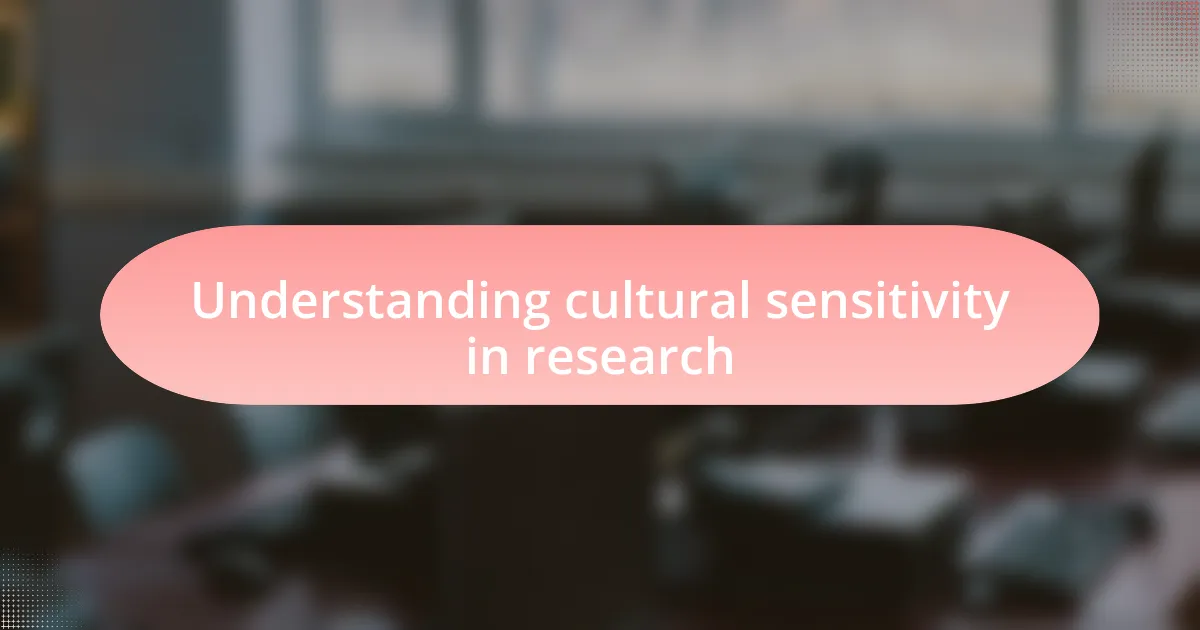
Understanding cultural sensitivity in research
Understanding cultural sensitivity in research is pivotal. When conducting studies, I’ve often found that researchers must recognize the significance of cultural contexts. For instance, while working on a project that sought to gather health data from a rural community, I quickly learned that simply translating surveys wasn’t enough. I had to consider local beliefs about health and illness, which required engaging with community leaders to build trust.
Reflecting on my experiences, I can’t stress enough the emotional weight that cultural sensitivity carries. During one research trip, I was met with skepticism when participants felt that researchers often disregarded their values. Realizing this, I paused to hear their concerns, which not only transformed our collaboration but ultimately enriched the research findings. Have you considered how your own background shapes interactions in fieldwork?
It’s crucial to ask ourselves: How often do we view our subjects through an unbiased lens? Being aware of our own biases can reveal blind spots. I’ve witnessed instances where assumptions about cultural norms led to misinterpretations of data. By leaning into the diverse perspectives present in any given study, we can foster more inclusive and impactful research outcomes.
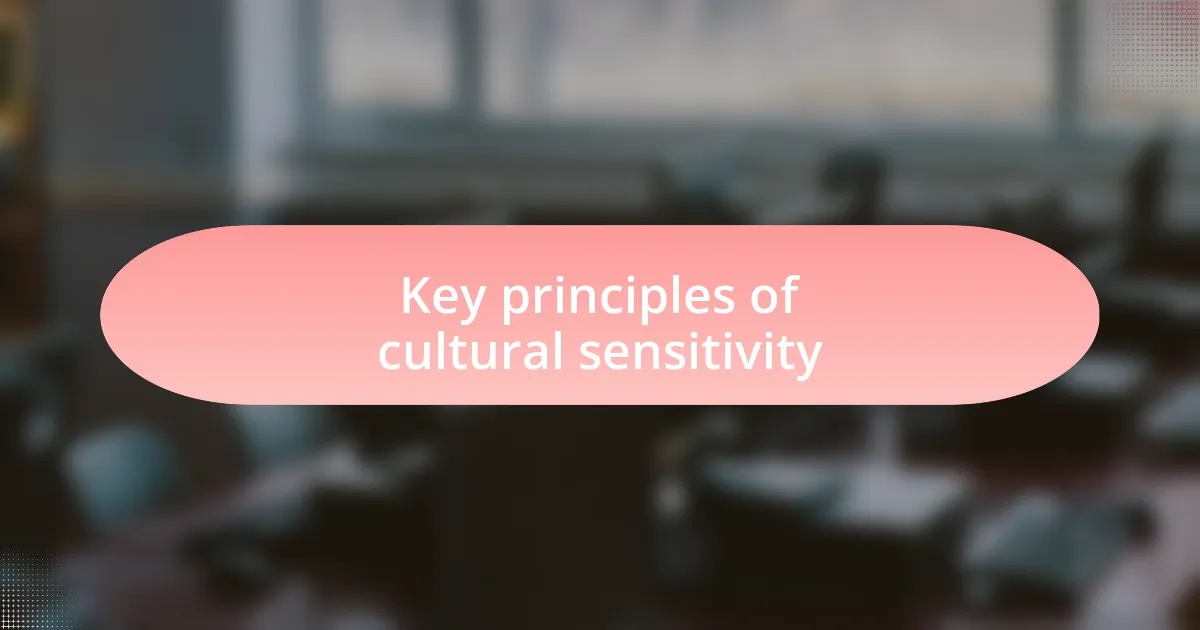
Key principles of cultural sensitivity
One of the key principles of cultural sensitivity is active listening. In my experience, taking the time to listen to community members can transform the research process. For instance, during a focus group, I witnessed how sharing stories about their health journey opened up deeper conversations that surveys alone never could. This emphasized to me that understanding feelings and values is just as important as collecting data.
Another principle is the importance of collaboration. When I partnered with local health workers for a study, the insights they provided were invaluable. They knew the community’s dynamics far better than I ever could and helped tailor our research approach. This collaboration not only made the research more relevant but also empowered community members to take part in the discussion about health priorities.
Lastly, adaptability plays a crucial role in cultural sensitivity. I recall a project where our original hypotheses clashed with the community’s practices. Rather than pushing forward with our preconceived ideas, we adjusted our methods to align with their beliefs. This flexibility not only improved participant engagement but also demonstrated that respect for cultural practices can lead to richer, more authentic results. How do we ensure our research methods are adaptable to the cultural nuances we encounter? In my view, embracing change is essential for effective research.
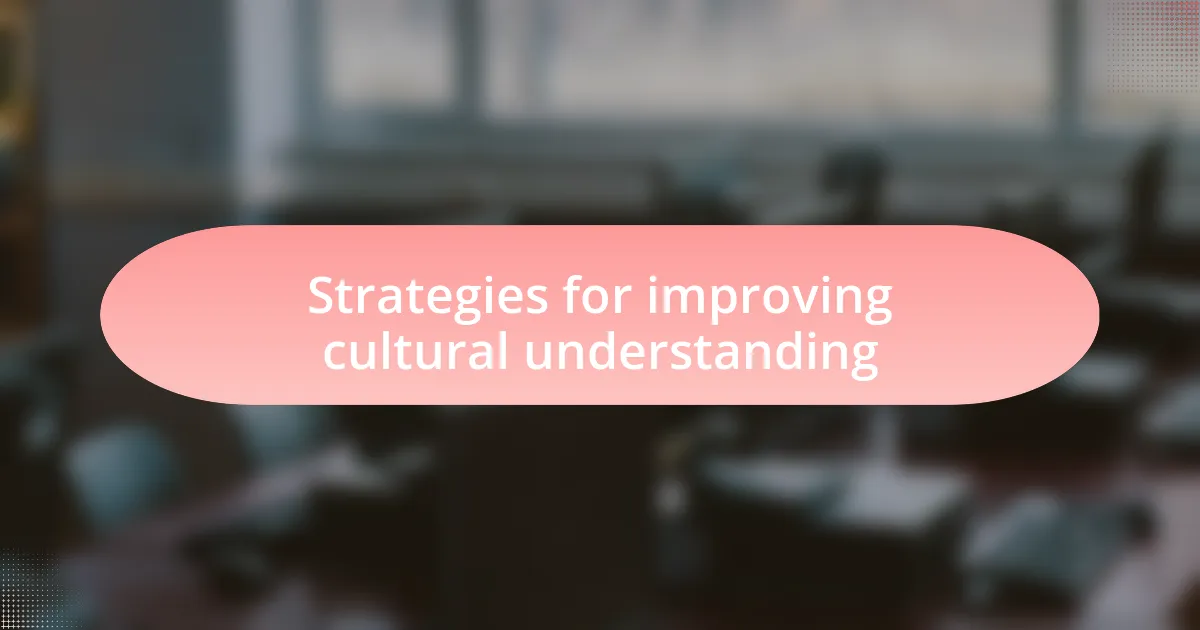
Strategies for improving cultural understanding
One effective strategy for improving cultural understanding is through ongoing education about cultural practices and beliefs. I remember attending a workshop where I learned about traditional healing methods still prevalent in certain communities. It was eye-opening; not only did it give me a greater appreciation for their approaches to health, but it also highlighted the importance of respecting and integrating these practices in our research. Have you ever found yourself questioning the methods you’ve always accepted? I believe that continual learning can reshape our perspectives and enhance our work.
Engaging in community events is another practical strategy I’ve found invaluable. When I participated in a local health fair, the connections I made were extraordinary. Through simple conversations and shared experiences, I discovered the community’s health challenges from their viewpoint. How often do we miss out on such insights by sticking only to formal settings? Genuine engagement fosters trust and makes individuals more willing to share their concerns, ultimately enriching the data we gather.
I’ve also seen the benefits of showcasing diverse voices in research. In one project, I encouraged community members to co-author our findings. The results were stunning—not only did we break down barriers, but their narratives added depth to the conclusions that I alone could never achieve. Isn’t it fascinating how collaboration at this level can lead to a more holistic understanding of health issues? When we amplify diverse perspectives, we create a richer, more inclusive research environment that truly resonates with those we aim to serve.
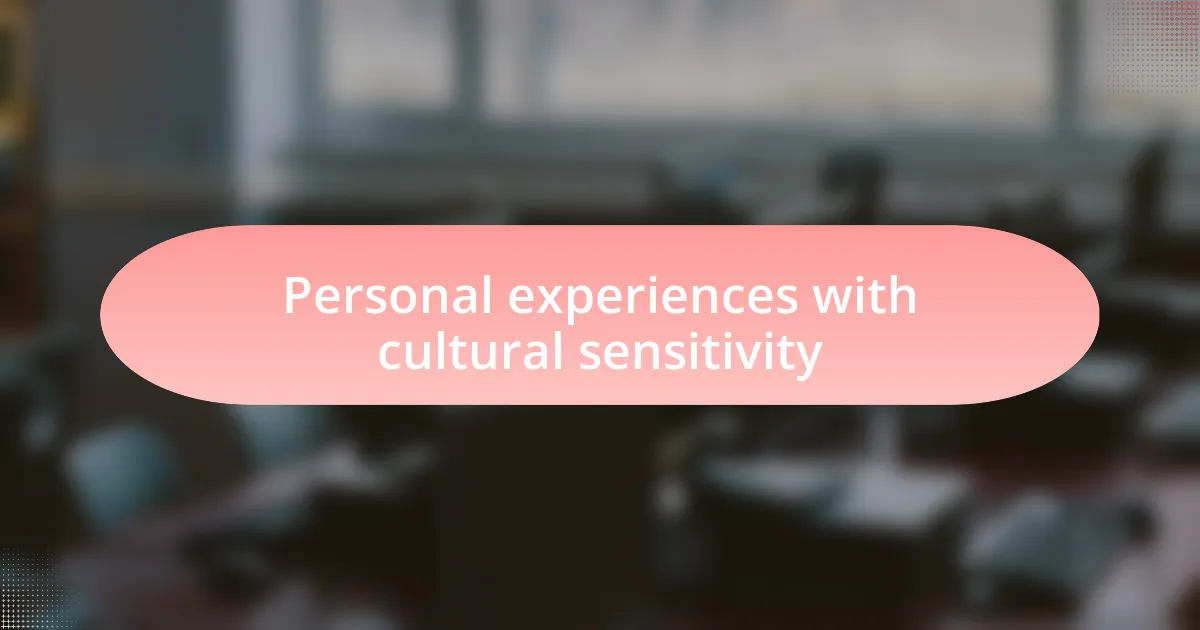
Personal experiences with cultural sensitivity
Navigating cultural sensitivity has been a journey for me, often marked by personal encounters that reshaped my understanding. I recall a particular instance while conducting interviews in a culturally diverse neighborhood. One participant hesitated to share their story, visibly uncomfortable with the setting. It made me reflect: how often do we overlook the significance of our environment? This experience reinforced the need for creating safe spaces that respect cultural norms, which I now prioritize in my approach.
Another memorable experience was a dialogue I had with a healthcare provider from a different background. They shared their challenges in balancing traditional beliefs with modern medicine when treating patients. Listening to their insights stirred a profound sense of empathy in me. I began to think, how can we bridge these gaps to ensure our research is genuinely representative? That conversation sparked my commitment to advocate for more inclusive practices in medical research—because if we don’t understand these perspectives, how can we claim to serve the communities effectively?
I also remember feeling deeply moved during a community forum where individuals shared their health narratives. The vulnerability they exhibited was striking. I found myself questioning my role: am I truly listening, or am I merely collecting data? This realization pushed me to step back and reassess my approach, leading me to emphasize the importance of relational dynamics in research. Engaging with genuine curiosity rather than just as a researcher has transformed the quality of the insights I gather.
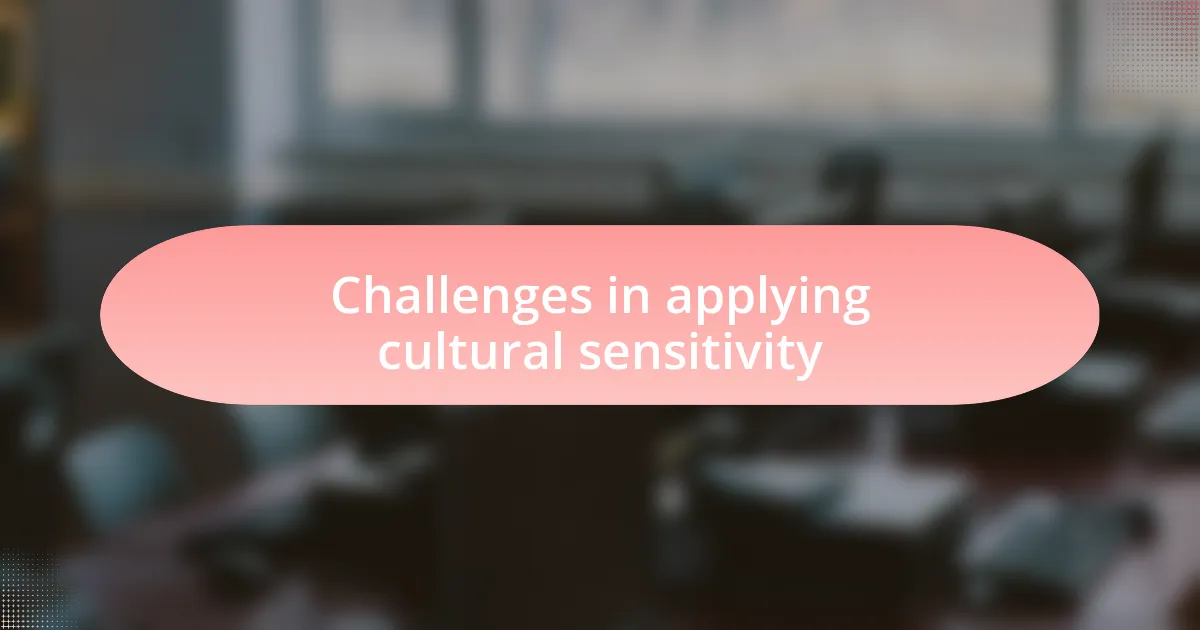
Challenges in applying cultural sensitivity
One significant challenge I’ve encountered in applying cultural sensitivity revolves around the assumptions researchers often make about different cultures. During a recent project, I assumed that providing educational materials in multiple languages would be sufficient to reach various communities effectively. However, I quickly learned that language is just one aspect of engagement. Many individuals valued face-to-face interactions far more, which left me wondering: how can we better align our methods with what communities truly need?
Another hurdle I faced was addressing the historical mistrust some groups have toward medical research. In one case, while working with a community that had experienced past exploitation, I observed that participants were skeptical about sharing their health information. This mistrust created an emotional barrier that made me question the ethics of our approach. How can we build trust and ensure that our research methods are not only respectful but also empower these communities?
Finally, balancing cultural sensitivity with rigorous scientific standards can feel like walking a tightrope. I find it challenging to incorporate diverse beliefs without diluting the integrity of the research. For instance, when working with a community that valued traditional healing practices, I had to consider how to integrate these perspectives while maintaining scientific accuracy. Is it possible to honor cultural beliefs and still produce reliable medical findings? This ongoing inquiry drives my commitment to finding innovative solutions that embrace both the richness of cultural diversity and the demands of scientific validity.